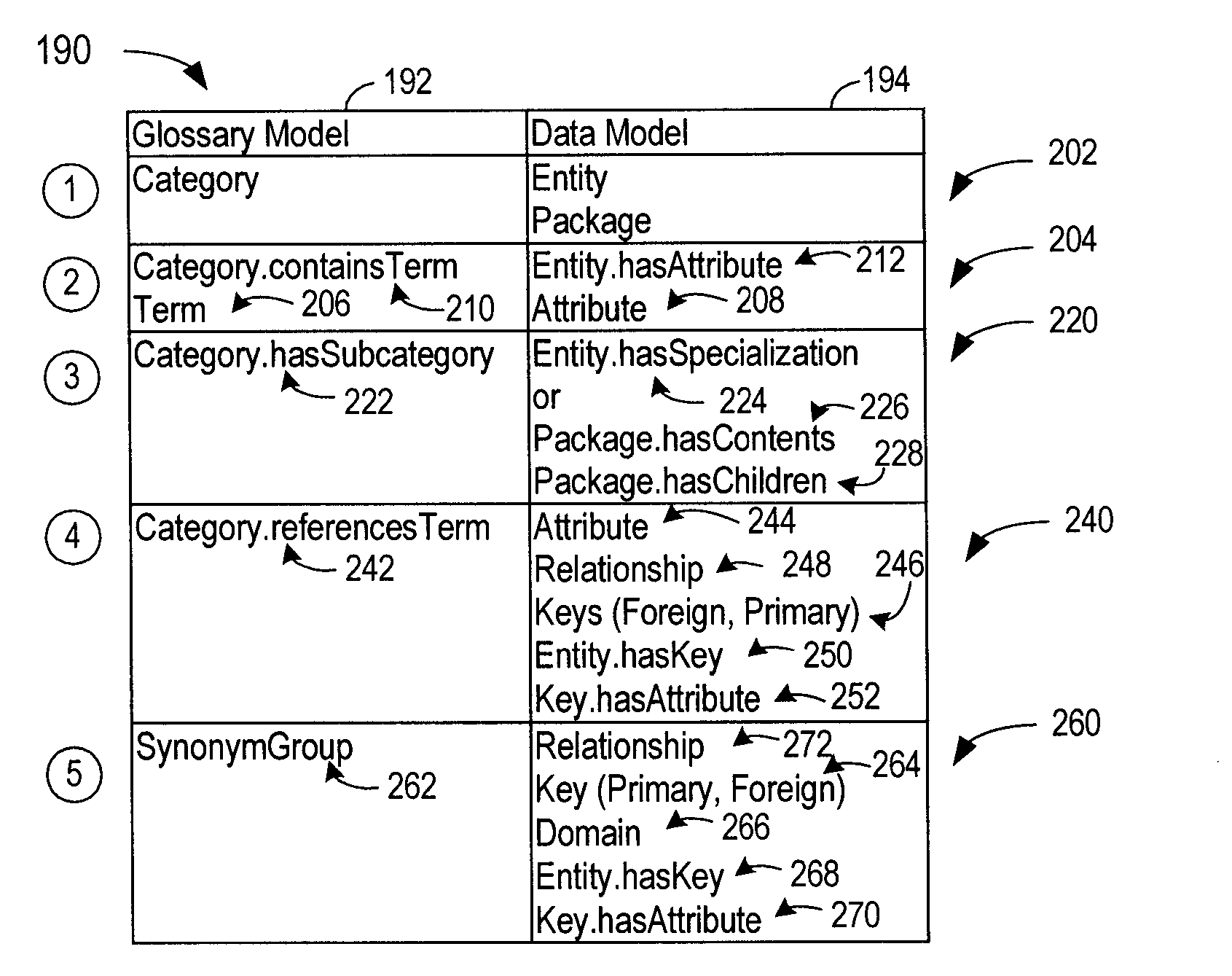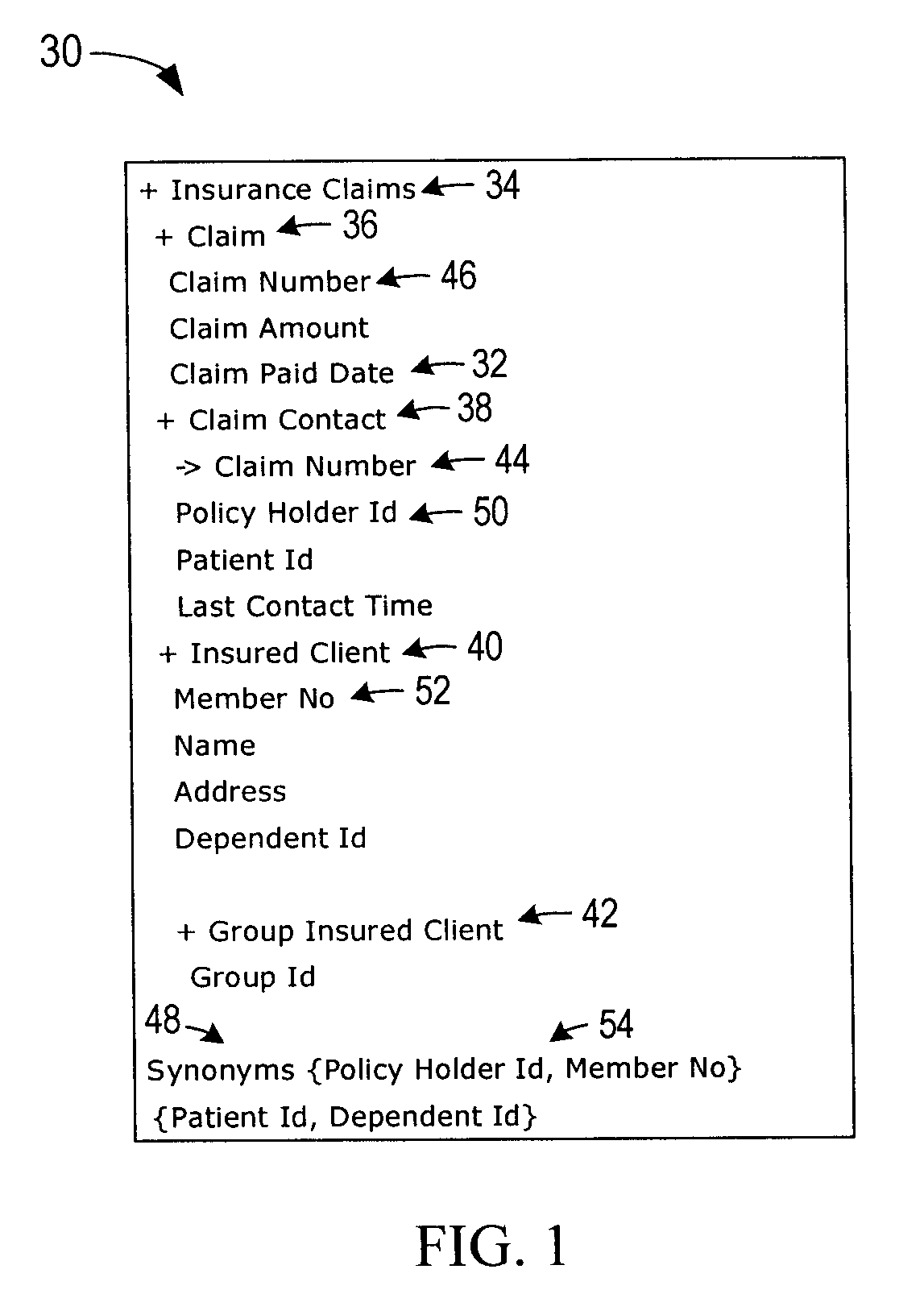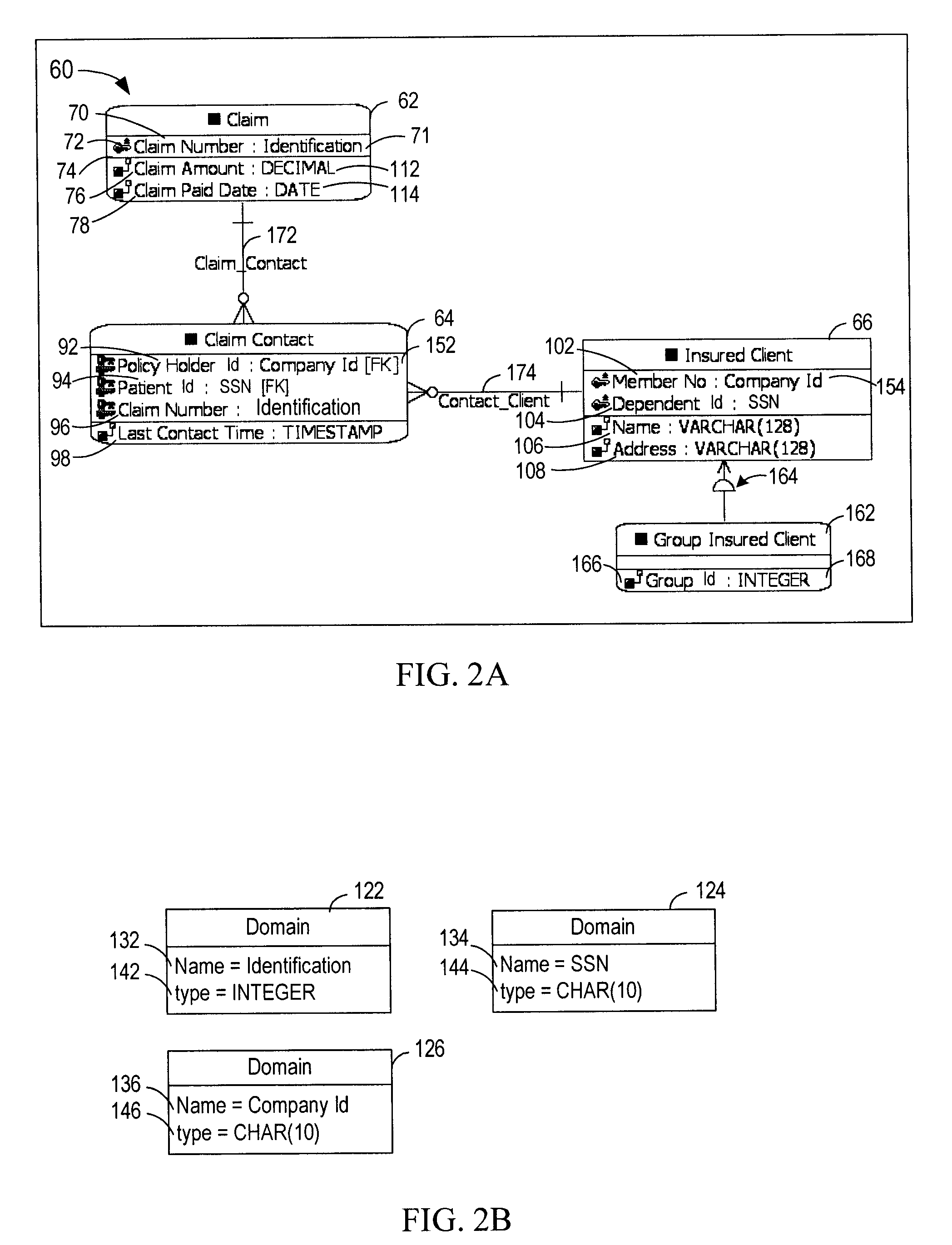Deriving a Data Model From a Hierarchy Of Related Terms, And Deriving a Hierarchy Of Related Terms From a Data Model
a data model and related term technology, applied in the field of data models, can solve the problems of cumbersome data model, slow collaboration process, and large number of terms or complex data models, and achieve the effect of reducing the complexity of the collaboration process, reducing the complexity of the data model, and reducing the number of terms
- Summary
- Abstract
- Description
- Claims
- Application Information
AI Technical Summary
Benefits of technology
Problems solved by technology
Method used
Image
Examples
Embodiment Construction
[0031]After considering the following description, those skilled in the art will clearly realize that the teachings of the various embodiments of the present invention can be utilized to automate collaboration between a business analyst and a data architect. Various embodiments of a method, data processing system and computer program product generate a data model based on a glossary model. The glossary model comprises categories and terms. At least one category of the glossary model comprises at least one term of the terms. The categories have a hierarchical relationship. The categories are mapped to objects of a data model. The terms are mapped to attributes of the data model. The attributes are associated with the objects of the data model, wherein a particular attribute of the attributes is associated with a particular object of the objects that is mapped from a particular category of the categories that comprises a particular term of the terms from which the particular attribute...
PUM
 Login to View More
Login to View More Abstract
Description
Claims
Application Information
 Login to View More
Login to View More - R&D
- Intellectual Property
- Life Sciences
- Materials
- Tech Scout
- Unparalleled Data Quality
- Higher Quality Content
- 60% Fewer Hallucinations
Browse by: Latest US Patents, China's latest patents, Technical Efficacy Thesaurus, Application Domain, Technology Topic, Popular Technical Reports.
© 2025 PatSnap. All rights reserved.Legal|Privacy policy|Modern Slavery Act Transparency Statement|Sitemap|About US| Contact US: help@patsnap.com



